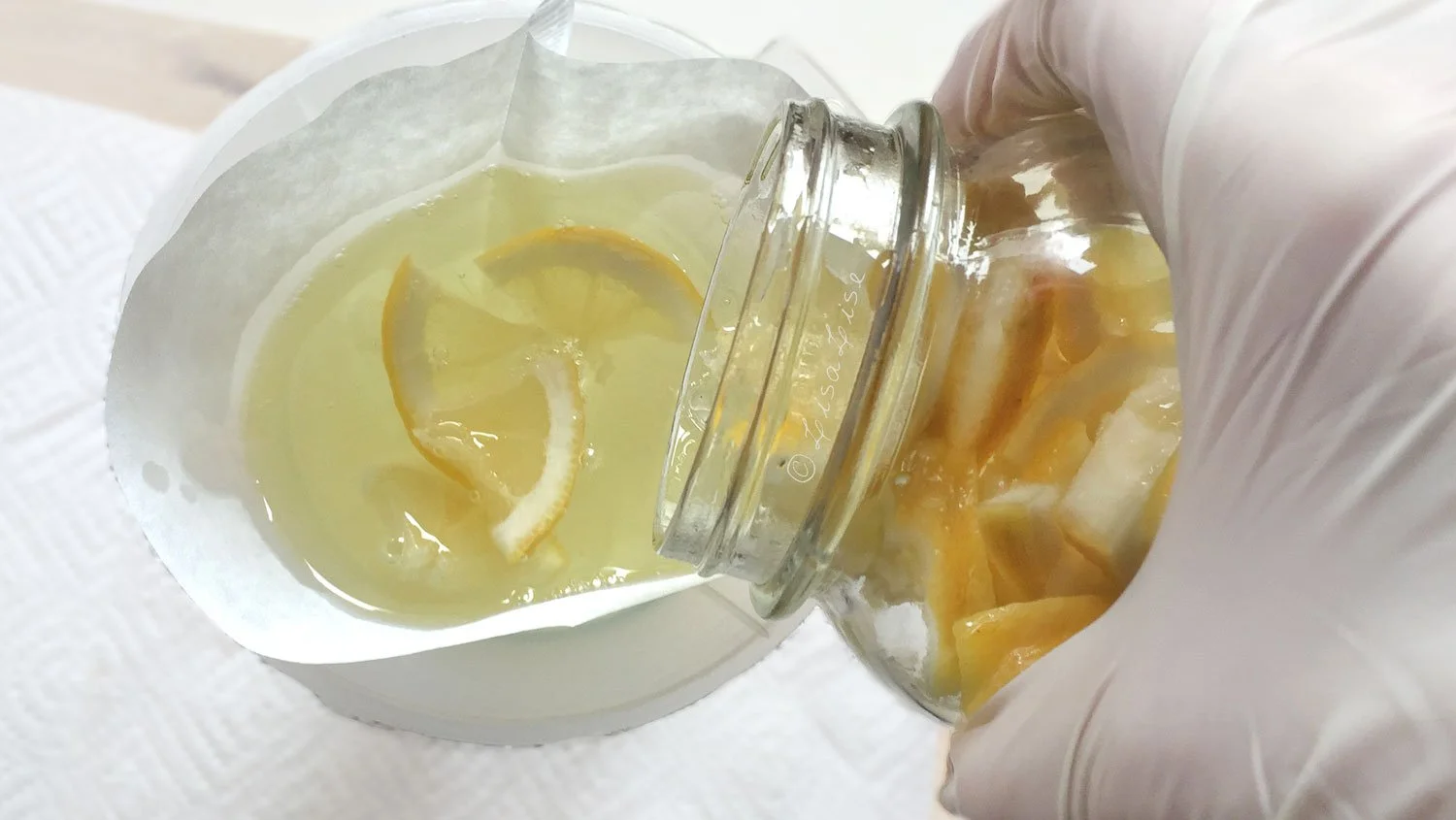Glycerine Front and Center
Lise
For years, glycerine was a staple in my stockroom – functioning as a useful go-to but mainly a 'background’ type of ingredient.
But that all changed when I started getting serious about making my own glycerites.
While still a staple in my stockroom, glycerine has now made its way to a front and center position in many of my formulations.
Well, let's face it: one can't help being motivated to develop glycerite-rich formulations when ones stock refrigerator is packed to the hilt with an array of beautiful fresh choices.
New to Glycerites?
A glycerite is – quite simply – an extract made by infusing botanicals (flowers, fruits or even vegetables) into glycerine. You could also call a glycerite a glycerine extract (and some do).
That lemony mixture you see in the picture above is a glycerite in the process of being strained (and if we had sniff buttons on our devices I would invite you to click so you could smell the delicious lemony-fresh fragrance).
Today we're going to take a quick peek at glycerine and how making and using glycerites has became an ongoing passion that shows no sign of fading - even after all these years.
Glycerine = Glycerin = Glycerol
Glycerites are easy and fun to make and one of the best parts is you only need 2 ingredients!
The main medium for making a glycerite is known by several names: Glycerine and Glycerin (some people leave out the last letter - both spellings are correct). Glycerine is also called Glycerol.
This clear, syrup-like liquid (sweet to the taste and sticky to the touch) is categorised as non-toxic and has multiple uses in a range of industries. Glycerine used in foods, pharmaceuticals, cosmetics and more.
As a barely-scratch-the-surface kind of list, you'll find glycerine as a component of
Food syrups
E-cigarette liquid
Vaccines
Anti-freeze
Bio-diesel
Medicine
Candy
and this list could go on and on...
Glycerine for Sensitive Skin
Glycerine soap is often recommended for sensitive skin. And the naturally higher content of glycerine in artisan-made soap could be why people with very dry skin prefer using handcrafted soap.
Glycerine Fun Fact
Glycerine functions beautifully as a 'water-look-alike' in photography and film studios because it has the ability to stay where it is put until the perfect shot is 'in the can'. (Now you know how they can 'capture' that perfect moment of dewy-freshness under a million hot lights that would make real water evaporate in seconds).
Glycerine Front and Center
In cosmetics, glycerine is a great addition to tonics, lotions, creams, serums, gels and more. To date, it has generally been recommended to keep the total amount of glycerine at under 10% of a formula to avoid tackiness and an unpleasant feel.
The fabulous news is: if you replace glycerine with a (handcrafted) glycerite, this amount can be increased greatly.
Not only does a glycerite (generally) have a less tacky feel, it includes the water-soluble components of the infused botanical, so it's glycerine 'with an extra dimension'.
Check this post for a free formula that incorporates a whopping 30% glycerite and isn't the least bit tacky feeling.
Check more about glycerine in this post
Do Tell
How do you use glycerine in your products?
PS: The bundle offer below shows you how to make your own beautiful glycerites and then get busy with them as star ingredients in a series of natural cleansers.


